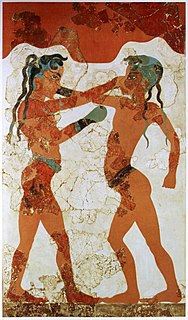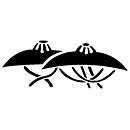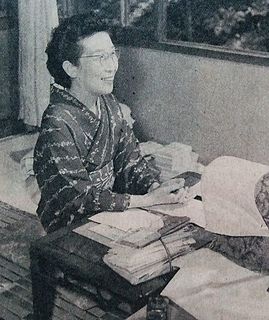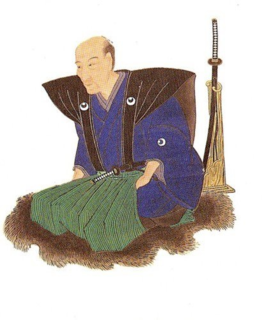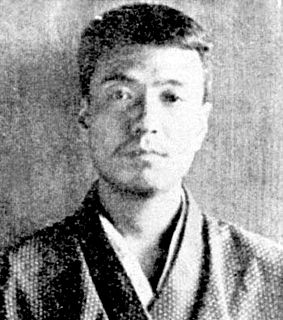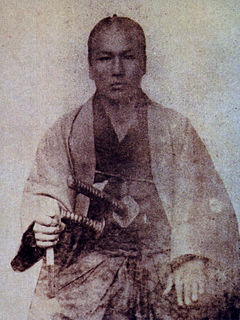| Hoshino Tenchi | |
|---|---|
Hoshino Tenchi | |
| Born | January 10, 1862 Nihonbashi, Edo, Japan |
| Died | September 17, 1950 (aged 88) Ashiya, Hyōgo, Japan |
| Occupation | writer, sword master |
| Genre | poetry, biography |
Hoshino Tenchi(星野 天知, January 10, 1862 - September 17, 1950) was the pen name a noted poet, educator, calligrapher, and martial arts master in Meiji period Japan. His true name was Hoshino Shinnosuke (星野慎之輔). Hoshino Tenchi was one of the founders of the Bungakukai literary magazine, which was highly influential in the development of modern Japanese literature and Japanese poetry.
A pen name is a pseudonym adopted by an author and printed on the title page or by-line of their works in place of their "real" name. A pen name may be used to make the author's name more distinctive, to disguise their gender, to distance an author from some or all of their previous works, to protect the author from retribution for their writings, to combine more than one author into a single author, or for any of a number of reasons related to the marketing or aesthetic presentation of the work. The author's name may be known only to the publisher or may come to be common knowledge.

The Meiji period, or Meiji era, is an era of Japanese history which extended from October 23, 1868 to July 30, 1912. This era represents the first half of the Empire of Japan, during which period the Japanese people moved from being an isolated feudal society at risk of colonisation by European powers to the new paradigm of a modern, industrialised nationstate and emergent great power, influenced by Western scientific, technological, philosophical, political, legal, and aesthetic ideas. As a result of such wholesale adoption of radically-different ideas, the changes to Japan were profound, and affected its social structure, internal politics, economy, military, and foreign relations. The period corresponded to the reign of Emperor Meiji and was succeeded upon the accession of Emperor Taishō by the Taishō period.

Japan is an island country in East Asia. Located in the Pacific Ocean, it lies off the eastern coast of the Asian continent and stretches from the Sea of Okhotsk in the north to the East China Sea and the Philippine Sea in the south.






